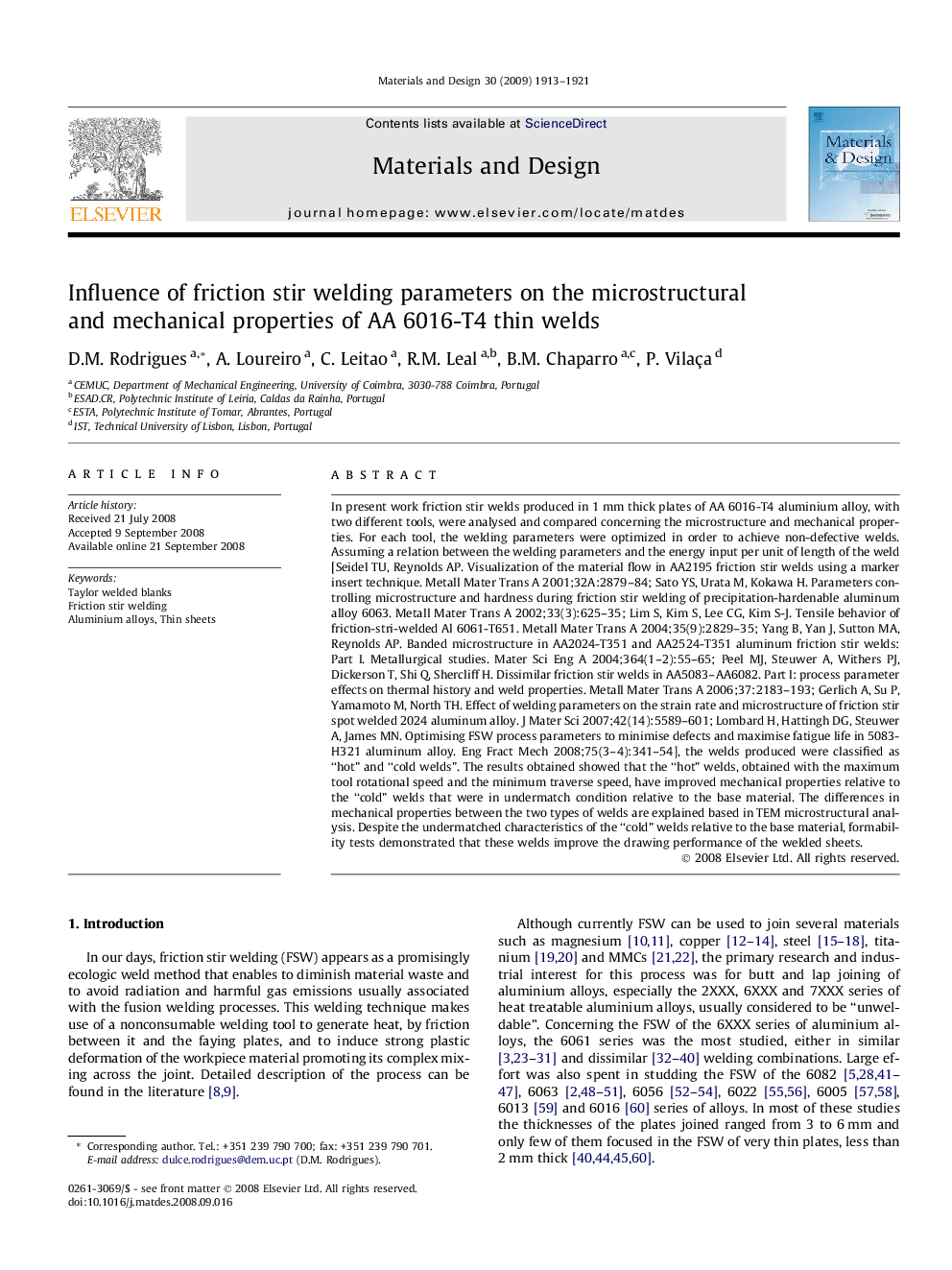| کد مقاله | کد نشریه | سال انتشار | مقاله انگلیسی | نسخه تمام متن |
|---|---|---|---|---|
| 832706 | 908124 | 2009 | 9 صفحه PDF | دانلود رایگان |

In present work friction stir welds produced in 1 mm thick plates of AA 6016-T4 aluminium alloy, with two different tools, were analysed and compared concerning the microstructure and mechanical properties. For each tool, the welding parameters were optimized in order to achieve non-defective welds. Assuming a relation between the welding parameters and the energy input per unit of length of the weld [Seidel TU, Reynolds AP. Visualization of the material flow in AA2195 friction stir welds using a marker insert technique. Metall Mater Trans A 2001;32A:2879–84; Sato YS, Urata M, Kokawa H. Parameters controlling microstructure and hardness during friction stir welding of precipitation-hardenable aluminum alloy 6063. Metall Mater Trans A 2002;33(3):625–35; Lim S, Kim S, Lee CG, Kim S-J. Tensile behavior of friction-stri-welded Al 6061-T651. Metall Mater Trans A 2004;35(9):2829–35; Yang B, Yan J, Sutton MA, Reynolds AP. Banded microstructure in AA2024-T351 and AA2524-T351 aluminum friction stir welds: Part I. Metallurgical studies. Mater Sci Eng A 2004;364(1–2):55–65; Peel MJ, Steuwer A, Withers PJ, Dickerson T, Shi Q, Shercliff H. Dissimilar friction stir welds in AA5083–AA6082. Part I: process parameter effects on thermal history and weld properties. Metall Mater Trans A 2006;37:2183–193; Gerlich A, Su P, Yamamoto M, North TH. Effect of welding parameters on the strain rate and microstructure of friction stir spot welded 2024 aluminum alloy. J Mater Sci 2007;42(14):5589–601; Lombard H, Hattingh DG, Steuwer A, James MN. Optimising FSW process parameters to minimise defects and maximise fatigue life in 5083-H321 aluminum alloy. Eng Fract Mech 2008;75(3–4):341–54], the welds produced were classified as “hot” and “cold welds”. The results obtained showed that the “hot” welds, obtained with the maximum tool rotational speed and the minimum traverse speed, have improved mechanical properties relative to the “cold” welds that were in undermatch condition relative to the base material. The differences in mechanical properties between the two types of welds are explained based in TEM microstructural analysis. Despite the undermatched characteristics of the “cold” welds relative to the base material, formability tests demonstrated that these welds improve the drawing performance of the welded sheets.
Journal: Materials & Design - Volume 30, Issue 6, June 2009, Pages 1913–1921